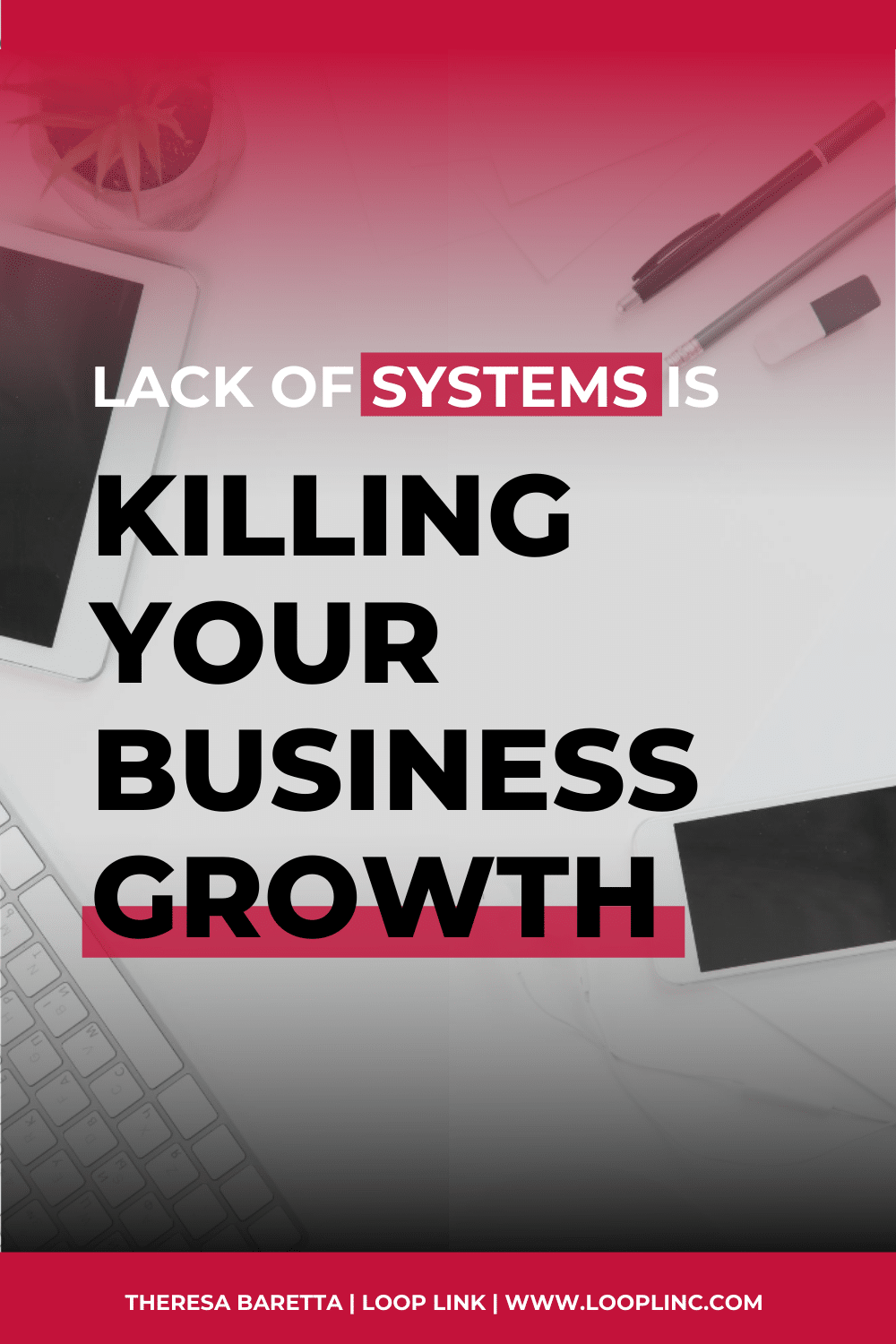Every year, businesses lose 20 – 30% of revenue due to inefficiencies. All because your current way of working isn’t as fine-tuned as it could be. There’s a gap in your business, and it’s the lack of systems that are impacting your revenue. It’s a common problem that affects the new to seasoned businesses.
Not having well-fitted systems in place to run your operation can be more stressful. It results in bad time management, lack of motivation, and squirrel syndrome. Most of all, a sense of overwhelm starts to creep in and knock you off of your intentional plan.

Throughout my years of service, I have found the one absolute way to solve every business problem. These are systems and processes that business owners have in their head. Yes, systems either run your business or people do. It might sound weird because you can’t run business systems without people.
I’m not much of a statistics person, but as business owners, we should be aware of our performances. It would be alarming to me to be losing that much in revenue. Imagine what you could do with that extra income! And if you don’t know me yet, you’ll soon learn that I love systems! Systems are one of the best ways to save yourself, your team, and your business hours of time every week.
The Systems Mindset
You can often see how a successful business is run based on the owner’s mindset. If an owner has a systems mindset, business growth and scaling is almost always present. If you understand the value of having systems in place, you will have more time to do what you love while your business runs itself.
Many clients come to me often in a state of sudden urgency. They had flown under the system’s radar for far too long, and have pushed their luck. Most business owners began their business as a “technician.”
Systems are often neglected because of a perceived lack of urgency. There are other important things to do like sales, marketing, and service fulfillment. Over time as their business grew, they started seeing the cracks formed by the lack of systems in place. There are some prominent signs that you can tell you’re ready for systems.
Building Your Systems Map
When you have sufficient systems, your business relies less on your mind to execute the day to day tasks. It allows you to focus on doing your thing. And when you’re focused on doing your thing, business growth is much more likely to actually happen.
If there are a lack of systems in your business, your schedule is likely hectic and chaotic. To correct this course, we need to carve out some time for you to focus on getting a few systems in place.
ACTION ITEM: Create a list. Write down and capture everything that you do in your business. Once you have your list, review and ask yourself which one can you document and systematize immediately.
Define Your Method
When you’ve determined which systems your business needs, the key is to follow it.
Most systems fail implementation because of lack of complete buy-in by the owners themselves. Often it’s our “ego” that gets in our own way. We feel that because we have done the process repeatedly that it comes naturally, we can still do it by memory. But by going on memory, there are tiny deviations along the way that we may not notice. Efficient systems need all users to follow the process. It creates the consistency to deliver the predictable client experience.
Systems give your business the ability to expand and grow. You can easily replicate your business in other areas without re-inventing the wheel every time. This improves your efficiency and reduces any lost time, and lost revenue.
ACTION ITEM: Plot your plan. Once you’ve selected a system to focus on, write down simple steps. COMMIT to following it.
[thrive_leads id=’19751′]Your Move
We’re always being interrupted and pulled away from what we’re focusing on. Lack of systems only enables a tsunami of distractions. Start bringing systems into your business if it’s starting to feel chaotic. Block off time in your schedule to focus on building these systems.
It might feel overwhelming to figure out what is a good starting point. The key is bite-size steps; start with systems that can be easily implemented with higher impact. An example can be your email system. You can quickly add autoresponders, canned responses, or even appointment bookings.
ACTION ITEM: Focus on one system for the next 30 days. Follow the process, each time. Make notes of what is working, and what could be improved upon. Review after 30 days, and then move onto the next system.
Measuring Success
Remember the key to success is consistency. Don’t rush to implement improper systems that don’t align with your business goals. This means adding tools or tech that are not well fitted to your processes and workflow.
What have you discovered through this process?
Are you still struggling to implement systems into your business?
Share your insights and thoughts below. Have a question? Ask away!








